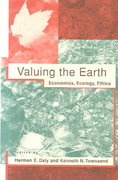Given the following explanations with correct answers
Exercise 5.7 Compute the dirty price, the duration, the modified duration, the $duration and the BPV (basis point value) of the following bonds with $100 face value assuming that coupon frequency and compounding frequency are (1) annual; (2) semiannual and (3) quarterly. Bond Maturity (years) |Coupon Rate (%) YTM (%) Bond 1 5 5 Bond 2 10 6 Bond 3 5 5 5 Bond 4 5 10 6 Bond 5 5 5 Bond 6 5 10 Bond 7 20 5 Bond 8 20 10 Bond 9 20 5 7 Bond 10 20 10Exercise 5./1 Zero-coupon Bonds 1. What is the price of a zero-coupon bond with $100 face value that matures in seven years and has a yield of 7%? We assume that the compounding frequency is semiannual. 2. What is the bond's modified duration? 3. Use the modified duration to find the approximate change in price if the bond yield rises by 15 basis points.Exercise 5.13 You own a 7% Treasury bond with $100 face value that has a modified duration of 6.3. The clean price is 95.25. You have just received a coupon payment 12 days ago. Coupons are received semiannually. 1. If there are 182 days in this coupon period, what is the accrued interest? 2. Is the yield greater than the coupon rate or less than the coupon rate? How do you know? 3. Use the modified duration to find the approximate change in value if the yield were to suddenly rise by 8 basis points. 4. Will the actual value change more or less than this amount? Why?Exercise 5.15 Today is 01/01/98. On 06/30/99, we make a payment of $100. We can only invest in a risk-free pure discount bond (nominal $100) that matures on 12/31/98 and in a risk-free coupon bond, nominal $100 that pays an annual interest (on 12/31) of 8% and matures on 12/31/00. Assume a flat term structure of 7%. How many units of each of the bonds should we buy in order to be perfectly immunized?Exercise 5.19 An investor holds 100,000 units of a bond whose features are summarized in the following table. He wishes to be hedged against a rise in interest rates. Maturity Coupon Rate YTM Duration Price 18 Years 9.5% 8% 9.5055 $114,181 Characteristics of the hedging instrument, which is here a bond are as fol- lows: Maturity Coupon Rate YTM Duration Price 20 Years 10% 8% 9.8703 $119.792 Coupon frequency and compounding frequency are assumed to be semian- nual. YTM stands for yield to maturity. The YTM curve is flat at an 8% level. 1. What is the quantity of the hedging instrument that the investor has to sell? 2. We suppose that the YTM curve increases instantaneously by 0.1%. (a) What happens if the bond portfolio has not been hedged? (b) And if it has been hedged? 3. Same question as the previous one when the YTM curve increases instanta- neously by 2%. 4. Conclude.Exercise 5.22 A trader implements a duration-neutral strategy, which consists in buying a cheap bond and selling a rich bond. This is the rich and cheap bond strategy. Today, the rich and cheap bonds have the following characteristics: Bond Coupon (%) Maturity (years) YTM (%) Rich 5 10 7.50 Cheap 5.5 12 7.75 Coupon frequency and compounding frequency are assumed to be annual. Face value are $100 for the two bonds. Compute the BPV of the two bonds and find the hedge position.6 CHAPTER 6-Problems Exercise 6./ We consider a 20-year zero-coupon bond with a 6% YTM and $100 face value. Compounding frequency is assumed to be annual. 1. Compute its price, modified duration, Sduration, convexity and Sconvexity? 2. On the same graph, draw the price change of the bond when YTM goes from 1% to 11% (a) by using the exact pricing formula; (b) by using the one-order Taylor estimation; (c) by using the second-order Taylor estimation.Exercise 6.3 1. Compute the modified duration and convexity of a 6%, 25-year bond selling at a yield of 9%. Coupon frequency and compounding frequency are assumed to be semiannual. 2. What is its estimated percentage price change for a yield change from 9% to 11% using the one-order Taylor expansion? Using the two-order Taylor expansion? Compare both of them with the actual change? 3. Same question when the yield decreases by 200 basis points. Conclude














